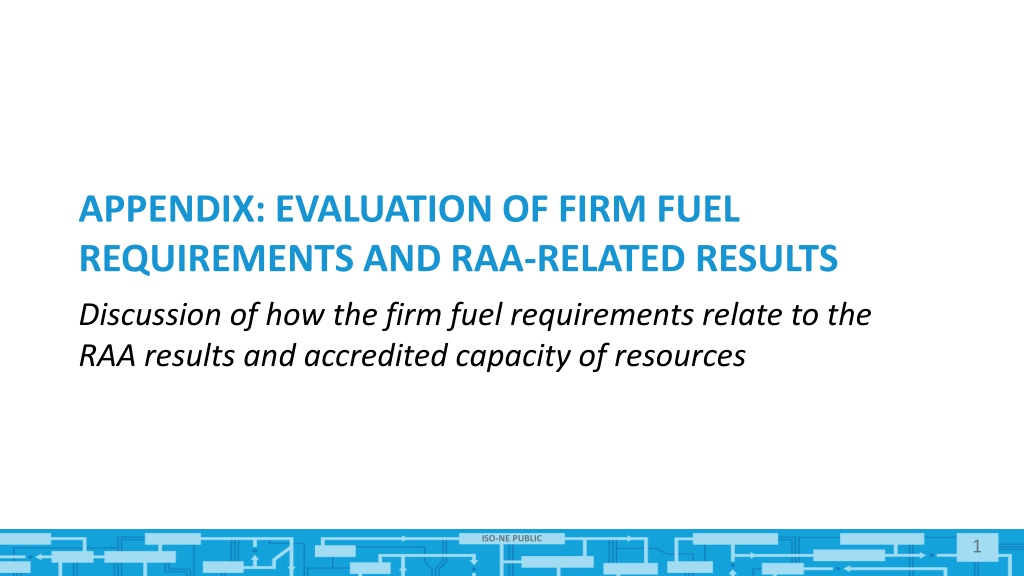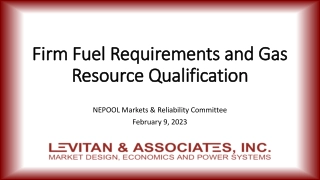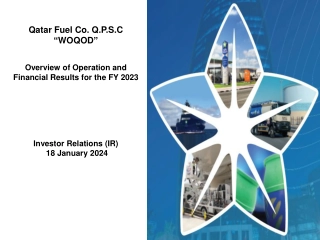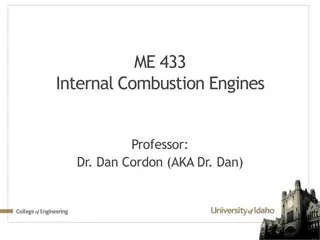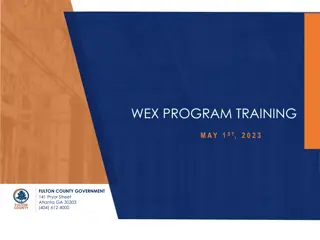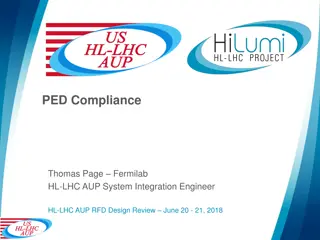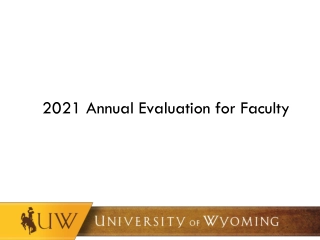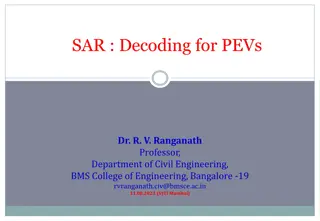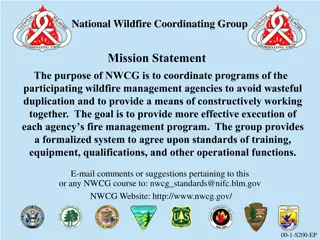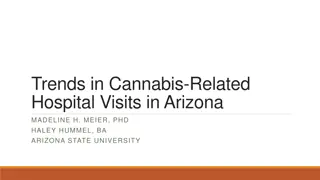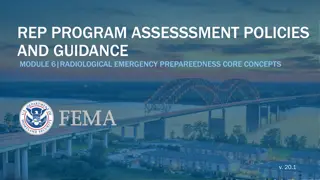APPENDIX: EVALUATION OF FIRM FUEL REQUIREMENTS AND RAA-RELATED RESULTS
This discussion focuses on the evaluation of firm fuel requirements and their relation to RAA results as well as the comparison of storage MRI and FDOR in ISO-NE. Analysis uncovers factors driving storage rMRI, impact on resource capacity during winter, and similarities between FDOR and Proxy Storage rMRI results.
Download Presentation
Please find below an Image/Link to download the presentation.
The content on the website is provided AS IS for your information and personal use only. It may not be sold, licensed, or shared on other websites without obtaining consent from the author. Download presentation by click this link. If you encounter any issues during the download, it is possible that the publisher has removed the file from their server.
Presentation Transcript
APPENDIX: EVALUATION OF FIRM FUEL REQUIREMENTS AND RAA-RELATED RESULTS Discussion of how the firm fuel requirements relate to the RAA results and accredited capacity of resources ISO-NE PUBLIC ISO-NE PUBLIC 1
COMPARISON OF STORAGE MRI AND FDOR Discussion of how the storage accreditation compares to the FDOR ISO-NE PUBLIC ISO-NE PUBLIC 2
Storage rMRI is driven by three factors Duration is the biggest driver of storage rMRI Storage resources need to charge from day to day which further limits their maximum MRI Caused by binding energy limits and insufficient time to fully charge of time between LOL events Storage resources are not able to charge other storage resources, even if they have available energy ISO-NE PUBLIC 3
Impact analysis results allow Proxy Storage rMRI in the winter to be calculated only factoring in duration RAA MRI Hours can be approximated in the winter using the probability-weighted total hours per day in which storage needs to be dispatched or there is loss of load A proxy storage resource with a duration of FDOR being charged on a daily basis (with no limit) approximates a gas resource meeting FDOR 100.0% 90.0% 80.0% 70.0% 60.0% rMRI 50.0% 40.0% 30.0% 20.0% 10.0% 0.0% 0 1 2 3 4 5 6 7 8 9 10 11 12 13 14 15 16 17 Storage Duration (hrs) Proxy Storage rMRI ISO-NE PUBLIC 4
Comparing the Proxy Storage rMRI to the winter Storage rMRI provides context for what is driving results Storage rMRI reflects the impacts of charging limits in the winter, dropping storage rMRI below the Proxy Storage rMRI at higher hours per day Storage rMRI also reflects that there can be multiple events in a day, with recharging time between, which allows the storage to recharge Allows Storage rMRI to be greater than the Proxy Storage rMRI at lower quantity of RAA MRI Hours per day ISO-NE PUBLIC 5
FDOR FC % and Proxy Storage rMRI produce similar results The rMRI curve based on linear representation of the FDOR (FC %) follows the Proxy Storage rMRI curve FDOR-based rMRI differs from the Storage rMRI sensibly No concept of charging limits or ability to recharge ISO-NE PUBLIC 6
FSOR AND FOSR Discussion of relationships between RAA results and FSOR and FOSR ISO-NE PUBLIC ISO-NE PUBLIC 7
FSOR and FOSR do not have direct comparisons to resources in the RAA RAA does not model long duration energy limits on resources Information from the RAA can still inform how these are developed in two areas Weighted-average estimated RAA MRI Hours Implied heating degree days (HDD) where LOLH are observed in the model ISO-NE PUBLIC 8
Weighted-average Est. MRI RAA Hours aligns with the FDOR Probability weighted-average of the estimated RAA MRI Hours from the impact analysis is 9.7 hours per day Reflects the average amount of energy capability required each day over the period to cover all of the days where there is a LOLH Some days may be above or below this average 9.7 hours per day aligns with the 10-hour FDOR ISO-NE PUBLIC 9
LOLH occurs on cold days in the winter period 90%+ of (probability weighted) est. RAA MRI Hours occur in the winter at HDD 55 or greater Analysis supporting the development of the cold weather and seasonal requirements targets these weather conditions ISO-NE PUBLIC 10
